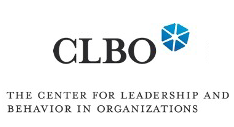Scope of the SGM
EAWOP SGM on “Gender Equality in Organizations: The Impact of Stereotypical Perceptions and Gender Differences“
Even though there has been an increase in women participating in the European labor market and women attain equal or slightly higher educational degrees than men (Eurostats, 2011), women are still underrepresented in management (Catalyst, 2012). The statistics and current research in the area of gender in organizations indicate that gender equality has not been reached to date, especially when it comes to male-dominated domains (e.g., Heilman, 2012; Koenig, Eagly, Mitchell, & Ristikari, 2011; O’Neil, Hopkins, & Bilimoria, 2008).
This EAWOP SGM is seeking to inspire innovative research in the area of gender in organizations in terms of novel methodological, theoretical and empirical approaches, and to initiate research cooperation across Europe.
It will focus on some of the following unresolved issues, for example:
(1) Measurement
- How are gender roles best measured?
- How appropriate are current gender equality measures?
- Does it suffice to assess biological gender to draw conclusions about gender differences in leadership?
(2) Gender Differences and Stereotypes:
- Do female and male leaders have different expectations of subordinates (i.e., implicit follower theories)?
- What influence has gender constellation in leader-employee dyads – not just examining match, but in all possible combinations?
- Are there different effects of working part time, taking a family break, etc. for female and male leaders? And if so, why?
- Are there intercultural differences in gender stereotypes across different countries in Europe due to legislation or cultural values/traditions?
(3) Interventions
- How can we influence and/or modify gender role expectations?
- How can we foster gender equality in management?
- How does organizational culture impact gender roles and what are the implications for interventions?
- What are the consequences of showing traditional vs. non-traditional women and men in organizational communication?
- How does gender neutral, male or feminine framing in job advertisements impact applicants’ self-concept, salary demands, etc.?




